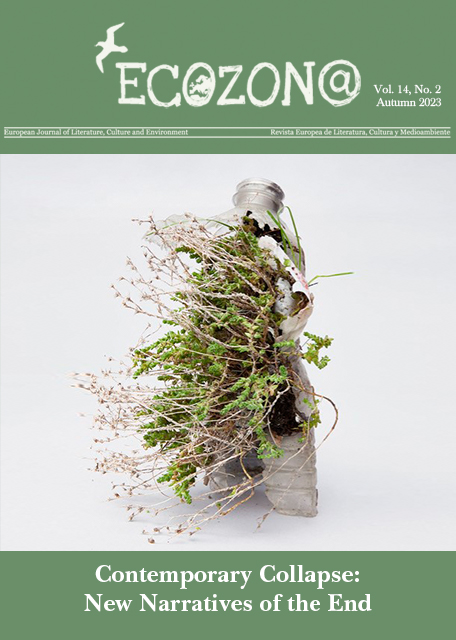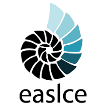<b>"A Life of Metal": An Ecocritical Reading of Silvia Avallone’s <i>Acciaio</i></b> // "Una vida de metales": Una lectura ecocrítica de <i>Acciaio</i> de Silvia Avallone
DOI:
https://doi.org/10.37536/ECOZONA.2014.5.2.616Keywords:
material ecocriticism, Silvia Avallone, industrial pollution, environmental issues // ecocrítica material, contaminación industrial, temas medioambientalesAbstract
Silvia Avallone’s acclaimed novel Acciaio (2010) narrates the struggling friendship, complicated existence, and coming of age of Anna and Francesca, two teenage girls who live in a working class neighborhood in the Tuscan coastal town of Piombino, near the Lucchini steel plant where most of their blue-collars older friends and relatives work. It tells the stories of human bodies who grow, love, suffer, struggle and die, but also of nonhuman matter (iron, steel) that is created, transformed and then “lives” a parallel co-existence in the same environment. More in particular, as its title and plot suggest, the novel also deals with the close relationship and reciprocal interferences between human beings and nonhuman matter, be it inorganic, like the iron ore and the machines the workers use to produce steel, or organic, like the animals, plants and shells the girls find on a beach near the plant site. Building on some of the theoretical postulates and methodological insights provided by ecocriticism’s recent “material turn”, that is, focusing on the novel’s representations of the encounters “between people-materialities and thing-materialities” (Bennett x), the aim of this paper is to suggest that Avallone’s novel not only presents a radically alternative vision of—at least a section of—Tuscany’s famed “Etruscan Coast,” but also hints at the sort of posthuman ecology that regulates this particular place. Ultimately, I argue that this text, by drawing attention to the mutual connections between “organisms, ecosystems, and humanly made substances” (Iovino 10), and between the biological, socio-economic and cultural spheres, goes way beyond the story of Anna and Francesca and the industrial area of Piombino where the Lucchini factory is situated. Taking this unusual Tuscan territory as an example, Avallone’s text provides a template for understanding ongoing dynamics in many other “Piombinos”, be they nearby in Tuscany—the Solvay soda-ash plant in Rosignano comes to mind—elsewhere in Italy, or all around the globe.
Resumen
La aclamada novela de Silvia Avallone, Acciaio (2010), narra la lucha de la amistad y la complica existencia y mayoría de edad de Anna y Francesca, dos adolescentes que viven en un barrio de clase obrera en el costero pueblo Toscano de Piombino, cerca de la acerería Lucchini, donde trabajan la mayoría de sus amigos mayores y sus parientes obreros. La novela cuenta la historia de cuerpos humanos que crecen, aman, sufren, luchan, y mueren, pero también de la materia no humana (hierro, acero) que se crea, se transforma, y después “vive” una existencia paralela en el mismo entorno. En particular, tal y como sugieren el título y la trama, la novela también trata de la cercana relación y las interferencias recíprocas entre los seres humanos y la materia no humana, sea inorgánica, como el mineral de hierro y las máquinas que los trabajadores usan para producir acero, u orgánica, como los animales, las plantas y las conchas que las chicas encuentran en una playa cerca de la acerería. Usando como base algunos postulados teoréticos y conocimientos metodológicos surgidos del reciente “giro material” de la ecocrítica, es decir, centrándose en las representaciones que la novela ofrece de los encuentros “entre materias-humanas y materias-cosas” (Bennett x), el objetivo de este ensayo es sugerir que la novela de Avallone no solo presenta una visión de la famosa “Costa Etrusca” de la Toscana (por lo menos una parte) radicalmente alternativa, sino que también insinúa el tipo de ecología posthumana que regula este lugar en concreto. Por último, argumento que este texto, al dirigir la atención a las conexiones mutuas entre “organismos, ecosistemas, y sustancias hechas por humanos” (Iovino 10), y entre las esferas biológicas, socioeconómicas, y culturales, va más allá de la historia de Anna y Francesca y del área industrial de Piombino donde se encuentra la acerería Lucchini. Tomando este insólito territorio toscano como ejemplo, el texto proporciona una plantilla para entender las continuas dinámicas en muchos otros “Piombionos”, estén cercanos a la Toscana (la planta de sosa Solvay en Rosignano viene a la mente), en otros lugares en Italia, o alrededor del mundo.
Downloads
Downloads
Published
Issue
Section
License
Authors who publish with this journal agree to the following terms:
a) Authors retain copyright and grant the journal right of first publication with the work simultaneously licensed under a Creative Commons Attribution License that allows others to share the work with an acknowledgement of the work's authorship and initial publication in this journal (CC BY-NC for articles and CC BY-NC-ND for creative work, unless author requests otherwise.
b) Authors are able to enter into separate, additional contractual arrangements for the non-exclusive distribution of the journal's published version of the work (e.g., post it to an institutional repository or publish it in a book), with an acknowledgement of its initial publication in this journal.
c) Authors are permitted and encouraged to post their work online (e.g., in institutional repositories or on their website) prior to and during the submission process, as it can lead to productive exchanges, as well as earlier and greater citation of published work (See The Effect of Open Access).










